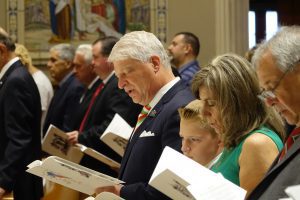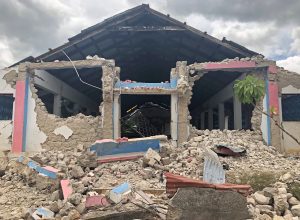
SCRANTON – The Diocese of Scranton will take up a special collection in all parishes to help the victims of several recent disasters on the weekend of Sept. 25 & 26.
In a letter to pastors, the Most Rev. Joseph C. Bambera, Bishop of Scranton, explained the funds would be used to assist those impacted by a recent earthquake and tropical storm that hit Haiti as well as the countless people who have been impacted by Hurricane Ida here in the United States.
Hurricane Ida made landfall in the Gulf Coast and moved inland as a tropical storm, causing damage and suffering in many states.
All funds received will become a part of the Bishops Emergency Disaster Fund and will be used to support the United States Conference of Catholic Bishops for pastoral and reconstruction needs of the Church as well as efforts of Catholic Charities USA and Catholic Relief Services, the official relief agencies of the U.S. Catholic Church.
While recognizing the continuing COVID-19 pandemic has imposed financial challenges on many parishioners, the bishop stressed that there is a growing need in communities impacted by both disasters and expressed hope that people will respond in such a time of need.
HURRICANE IDA’S IMPACT WIDESPREAD
Hurricane Ida made landfall in Louisiana Aug. 29 as one of the most powerful storms to strike the state. It caused extensive damage in the Gulf Coast region, knocking out power, destroying homes, buildings and churches, and causing extensive flooding.
The storm continued toward the Northeast, where it dropped heavy rains in New Jersey, New York, Pennsylvania and Connecticut, leading to massive flooding of homes, subways and streets. Through Sept. 7, Ida had claimed 89 lives in the U.S. Another 20 people died in Venezuela before Ida headed northward.
Catholic Charities in and around the areas of Louisiana and Mississippi affected by Hurricane Ida – one of the most powerful storms to hit the continental U.S. since Hurricane Katrina in 2005 – are working hard to assist residents. More than two million people initially lost electricity after the storm.
Louisiana Governor John Bel Edwards has classified the damage as “catastrophic.”
Pastors in the areas that suffered the most damage during Ida are now getting help from people all around the community.
Father Jared Rodrigue, pastor, Saint Luke the Evangelist Church in Slidell, talked about the outpouring of support.
“It is unfortunate that it takes a tragedy to see Catholic Church teaching in its essence – to see faith in action” Father Rodrigue said. “There’s great hope in knowing we are capable of giving time and resources.”
Officials in the hardest hit areas say there are still many houses with water and some houses that are not even accessible.
POST-QUAKE HAITI: FUNERALS AND A DAILY QUEST FOR FOOD, WATER, SHELTER
Weeks after Haiti’s Aug. 14 earthquake, the country’s southwest peninsula is still marked by funerals, aftershocks and a daily search for clean water, food and shelter.
“One of the things that really struck me two weeks out is the number of funerals – everywhere you go there are funerals, as people are burying their loved ones, and it brings a sense of overwhelming grief when that many people pass away; it is very striking,” said Beth Carroll, head of programs for Catholic Relief Services in Haiti.
The magnitude 7.2 quake killed more than 2,200 and injured more than 12,200 others. About 130,000 homes were damaged, including 50,000 which were completely destroyed, according to Haiti government estimates.
“It is very visible in the affected communities, where 90% of homes, schools and churches were flattened in the hot spots,” said Carroll. “There is also significant damage which is less visible: a lot of water systems are damaged and no longer functioning, or the water is dirty and not usable.”
Staffers of CRS, the U.S. bishops’ international relief and development agency, are operating under tarps at a parking lot near their operations center in Les Cayes following damage to their offices.
Following the tragedy, CRS has been focused on distributing emergency shelter and hygiene kits in concert with the Haiti government’s thrust to help Haitians rebuild their lives at home and discourage them from relocating to tent cities or sleeping in the streets.
CRS maintains a stockpile of emergency supplies in-country and has embellished its earthquake response resources with goods from the U.S. military along with the U.S. Agency for International Development, the United Nations and World Vision, which works in Haiti but had no presence in the Les Cayes region.
Les Cayes is Haiti’s third-largest city. Carroll said local hospitals and health clinics have done the best they can to treat the injured with their available resources and are moving toward normalcy following the crisis. They also moved many patients to other hospitals in the southern region or to Port-au-Prince.
A major concern in the Les Cayes region is damage to schools and the potential fallout for children, who already have lost significant time in the classroom due to the COVID-19 pandemic and Haiti’s dysfunctional political situation and widespread food insecurity.
“We would really like to see how we can prevent a late start to the school year, and many schools aren’t going to be able to accept children,” Carroll said. “They really can’t afford to miss further class time.”
CRS is also working closely with the local Catholic diocese in Les Cayes as well as the regional office for Caritas Internationalis, which Carroll said recently lost its regional director to COVID-19.
Caritas has “started a very rapid response program, and we are supporting them and doing training with them despite the upheaval of a new (Caritas regional) director, an earthquake and a recent tropical storm (Grace) — and yet they are still out there doing their project,” Carroll said.
She said there is only speculation as to why Haiti has been spared so far from more cases of COVID-19.
“There are a lot of theories, including that the Haitian population is so young, and that people spent a lot of time outdoors in fresh air rather than indoors with recirculated air,” she said.

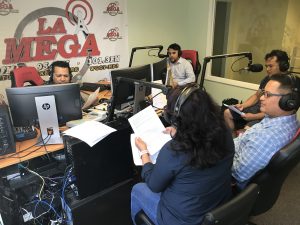
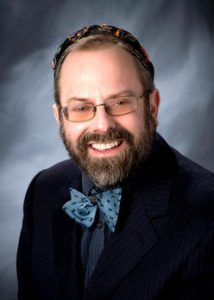 SCRANTON – When Rabbi Daniel Swartz received a letter from the Vatican last December inviting him to help put together a new declaration on climate change, the leader of Temple Hesed had only one thought.
SCRANTON – When Rabbi Daniel Swartz received a letter from the Vatican last December inviting him to help put together a new declaration on climate change, the leader of Temple Hesed had only one thought. HAZLETON – As the new school begins, there are many new faces filling the halls of Catholic schools across the Diocese of Scranton.
HAZLETON – As the new school begins, there are many new faces filling the halls of Catholic schools across the Diocese of Scranton.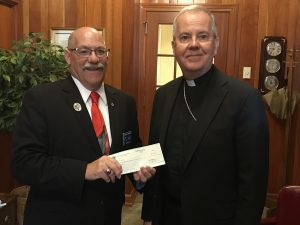 SCRANTON – Members of the Knights of Columbus recently presented the Most Rev. Joseph C. Bambera, Bishop of Scranton, with two charitable donations.
SCRANTON – Members of the Knights of Columbus recently presented the Most Rev. Joseph C. Bambera, Bishop of Scranton, with two charitable donations.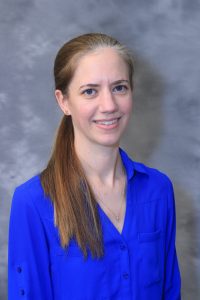 SCRANTON – Most Reverend Joseph C. Bambera, Bishop of Scranton, has announced the appointment of Ms. Erin McGrady as Safe Environment Coordinator for the Diocese of Scranton.
SCRANTON – Most Reverend Joseph C. Bambera, Bishop of Scranton, has announced the appointment of Ms. Erin McGrady as Safe Environment Coordinator for the Diocese of Scranton.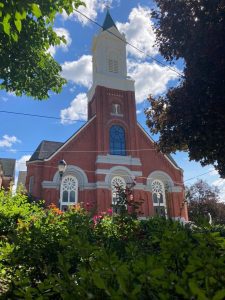 CARBONDALE – With champagne in hand, parishioners gathered outside Saint Rose of Lima Church on Aug. 23, 2021, to celebrate the relighting of its steeple after the completion of a major renovation project.
CARBONDALE – With champagne in hand, parishioners gathered outside Saint Rose of Lima Church on Aug. 23, 2021, to celebrate the relighting of its steeple after the completion of a major renovation project.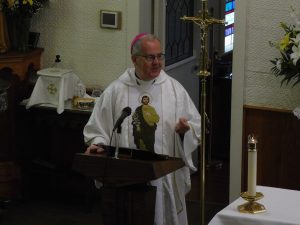 RILEYVILLE – With a banner hanging outside Saint Joseph Church announcing its 150th anniversary, parishioners in northern Wayne County gathered on Aug. 22 to celebrate the special milestone of their house of worship.
RILEYVILLE – With a banner hanging outside Saint Joseph Church announcing its 150th anniversary, parishioners in northern Wayne County gathered on Aug. 22 to celebrate the special milestone of their house of worship.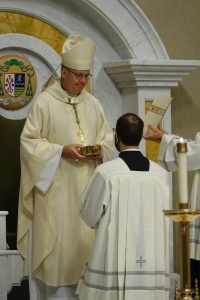 SCRANTON – Seminarian Michael J. Boris stood before the Most Rev. Joseph C. Bambera, Bishop of Scranton, on Aug. 19 and affirmed his desire to advance along the path toward the priesthood.
SCRANTON – Seminarian Michael J. Boris stood before the Most Rev. Joseph C. Bambera, Bishop of Scranton, on Aug. 19 and affirmed his desire to advance along the path toward the priesthood.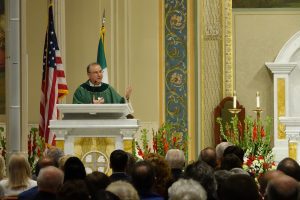 SCRANTON – Hundreds of people gathered to celebrate their faith – and their Italian heritage – at the Cathedral of Saint Peter on Sept. 5 at the 45th annual La Festa Italiana Mass.
SCRANTON – Hundreds of people gathered to celebrate their faith – and their Italian heritage – at the Cathedral of Saint Peter on Sept. 5 at the 45th annual La Festa Italiana Mass.